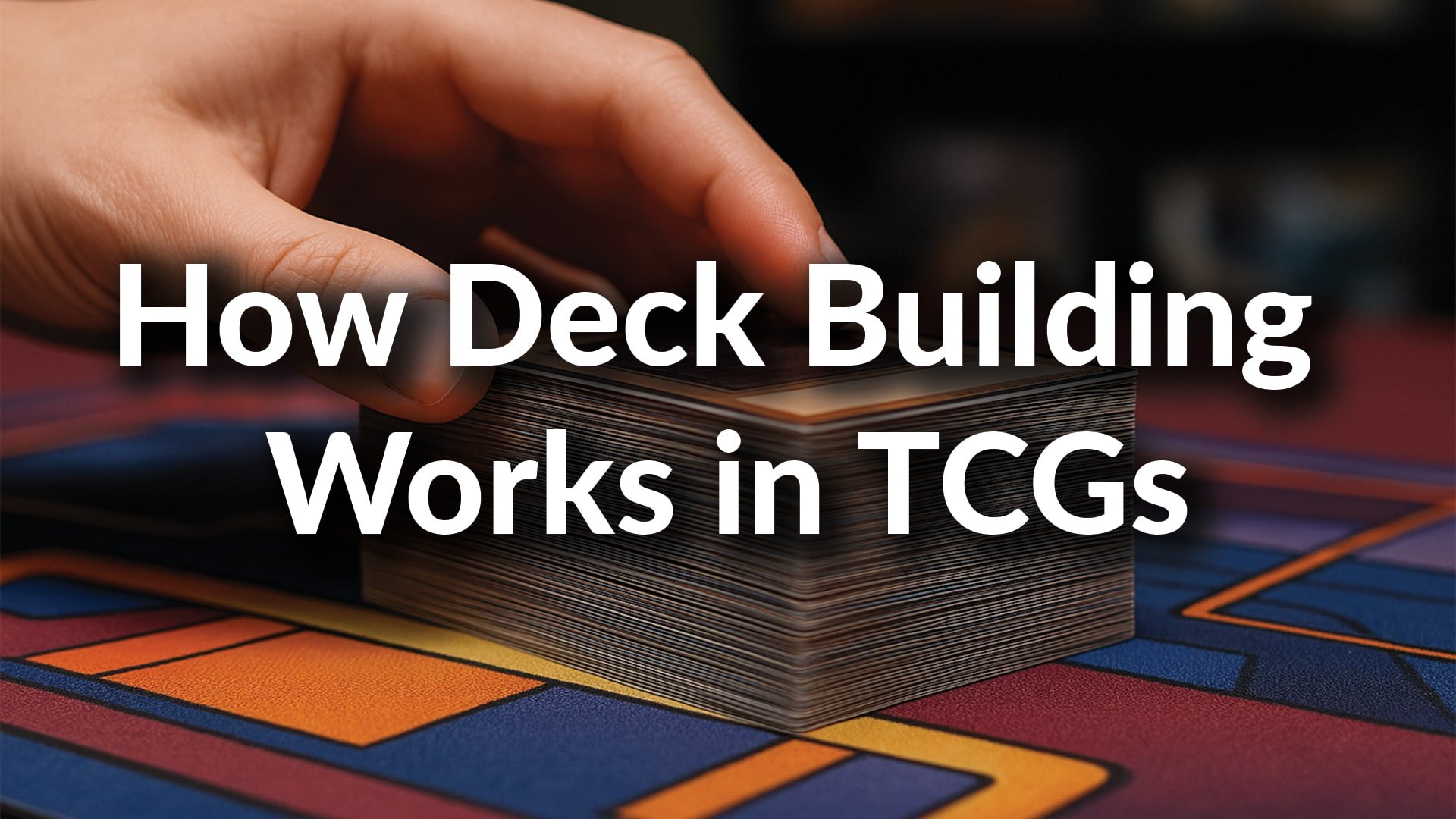How Deck Building Works in TCGs
Deck building is the cornerstone of every great Trading Card Game (TCG). It’s where strategy begins—long before any card is played. Whether you're tapping lands in Magic: The Gathering, evolving a Charizard in Pokémon, setting traps in Yu-Gi-Oh!, or crafting combos in Challengers of the Realm, your deck is more than a collection of cards—it’s your personalized path to victory.
In this post, we’ll explore how deck building works in several popular TCGs and highlight what makes each approach unique. We’ll also introduce how Challengers of the Realm, a rising star in the TCG world, offers a fresh yet familiar twist on the format.
What is Deck Building?
At its core, deck building is the process of selecting and organizing a set of cards—usually from a much larger pool—to create a playable deck that aligns with your strategy. Each TCG has its own rules, limits, and themes that shape how decks are built, and mastering this process is essential for success.
Pokémon TCG: Type Synergy and Evolutions
In the Pokémon Trading Card Game, a standard deck contains exactly 60 cards, including:
Pokémon Cards: Basic and evolved forms
Trainer Cards: Support, Item, and Stadium effects
Energy Cards: Fuel for attacks
Deck building in Pokémon revolves around type synergy and evolution chains. A solid deck usually focuses on one or two types (like Fire or Water) to maintain consistency and boost the value of type-specific support cards.
Key to success: Energy balance and draw engines (like Professor’s Research or Ultra Ball) to keep your hand flowing with options.
Magic: The Gathering – Mana Curve and Color Identity
Magic: The Gathering offers one of the deepest deck-building experiences. A typical constructed deck includes:
60+ cards (no upper limit)
A balance of creatures, instants, sorceries, enchantments, and lands
A “color identity” based on MTG’s five colors
The mana curve—the cost distribution of your cards—is crucial. Lean too heavy on high-cost cards and risk getting overpowered early. Load up on cheap spells, and you might run out of steam late-game.
Popular archetypes include aggro, control, combo, and midrange—each demanding its own deck-building mindset.
Yu-Gi-Oh! – Speed and Synergy
In Yu-Gi-Oh!, decks contain 40 to 60 cards, and there’s no energy or mana system, leading to fast-paced, combo-heavy gameplay.
Decks typically include:
Monsters: Normal, Effect, Fusion, Synchro, Xyz, and Link types
Spells and Traps: For disruption and support
Extra Deck: Up to 15 advanced summon monsters
Yu-Gi-Oh! deck building focuses on combo engines, consistency, and explosive plays. Competitive players aim to make powerful moves within the first few turns using streamlined core builds.
Challengers of the Realm – Crafting Your Deck
Challengers of the Realm (CotR) introduces a unique deck-building experience driven by strategic diversity and Guild affiliations.
Deck Construction Rules:
Deck Size: 40–80 cards
Card Rarity Limits:
Common: Up to 3 copies
Rare: Up to 2 copies
Legendary: Only 1 copy
Guild Requirements:
Tools: Only equippable by Heroes from the Tool’s “Guild of Origin” or permitted guilds
Instants & Banners: Require at least 10 Heroes from the same Guild of Origin
Locations: Require the majority of Heroes in the deck to share a Guild with the Location
These mechanics ensure decks stay thematically rich and strategically balanced, offering players freedom and structure in equal measure.
CotR’s deck building isn't just about raw power—it’s about creating synergy, expressing your Guild’s identity, and outwitting your opponent with precision.
5 Universal Deck Building Tips (No Matter the Game)
Know Your Win Condition
Every deck needs a goal—be it a game-winning combo, overwhelming force, or a slow grind to control the game.Keep a Balanced Curve
Mix low, mid, and high-cost cards to ensure you have plays throughout the match.Prioritize Consistency
Include card draw or search effects to find your key cards more reliably.Build for the Meta
Tailor your deck to handle the most common threats or trends in your local or online playgroup.Playtest and Refine
No deck is perfect at first. Play it, tweak it, and evolve it.
Final Thoughts
Deck building is the heartbeat of any Trading Card Game. It blends creativity, planning, and game knowledge into one powerful experience. Whether you’re mastering the depth of Magic, unleashing fast combos in Yu-Gi-Oh!, optimizing type synergy in Pokémon, or forging your legend in Challengers of the Realm, the way you build your deck defines your journey.
So, shuffle up, choose your playstyle, and start crafting your next victory—one card at a time.
💬 What’s Your Deck Building Style?
Tell us what you’re playing—or how you’d build your dream deck in *Challengers of the Realm*! Join our Discord to get in on the conversation!
📩 Want More Strategy cotr?
Subscribe to our newsletter for all the latest CotR news.
🛒 Build Your Deck IRL
Check out the Ileydrian Founder’s Deck and start crafting your legacy today.

